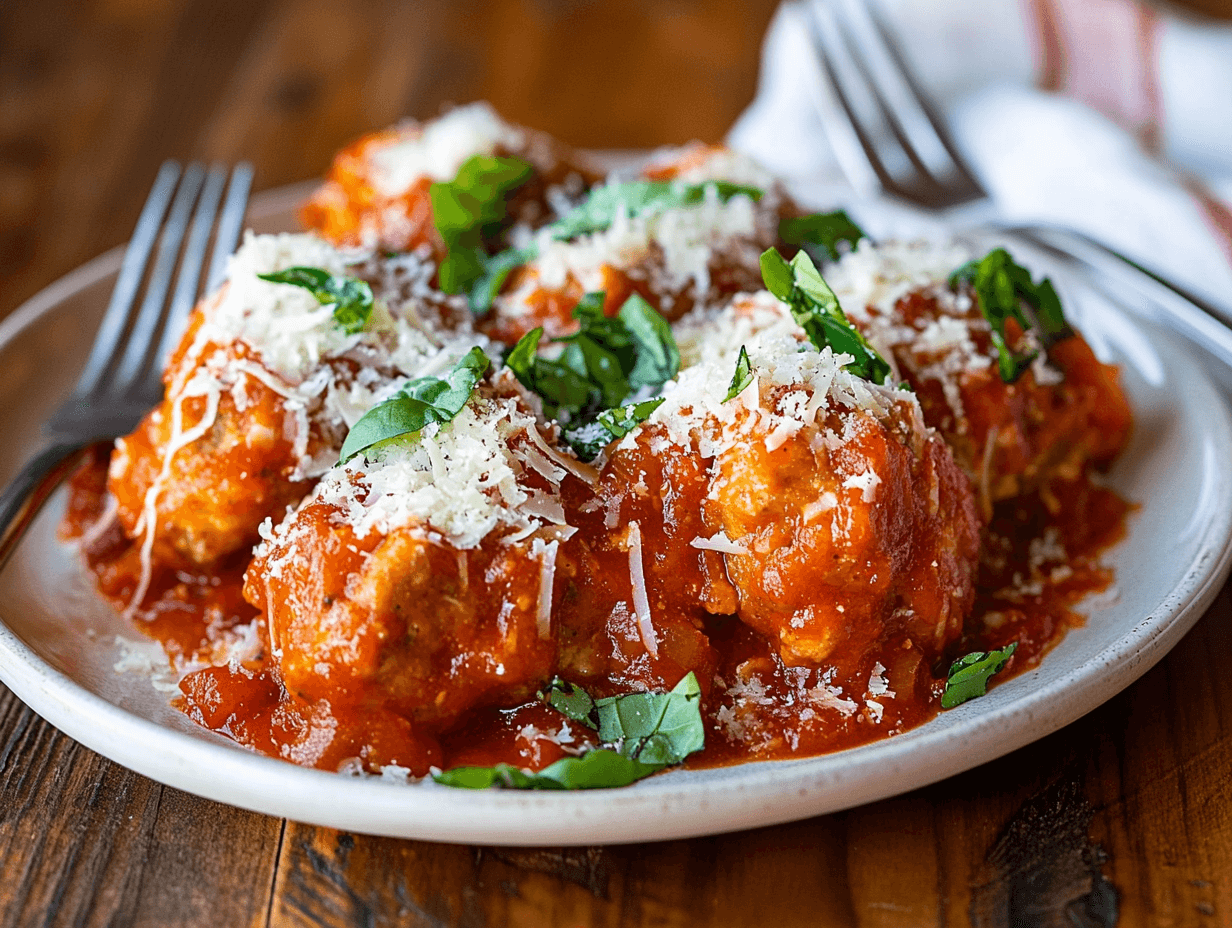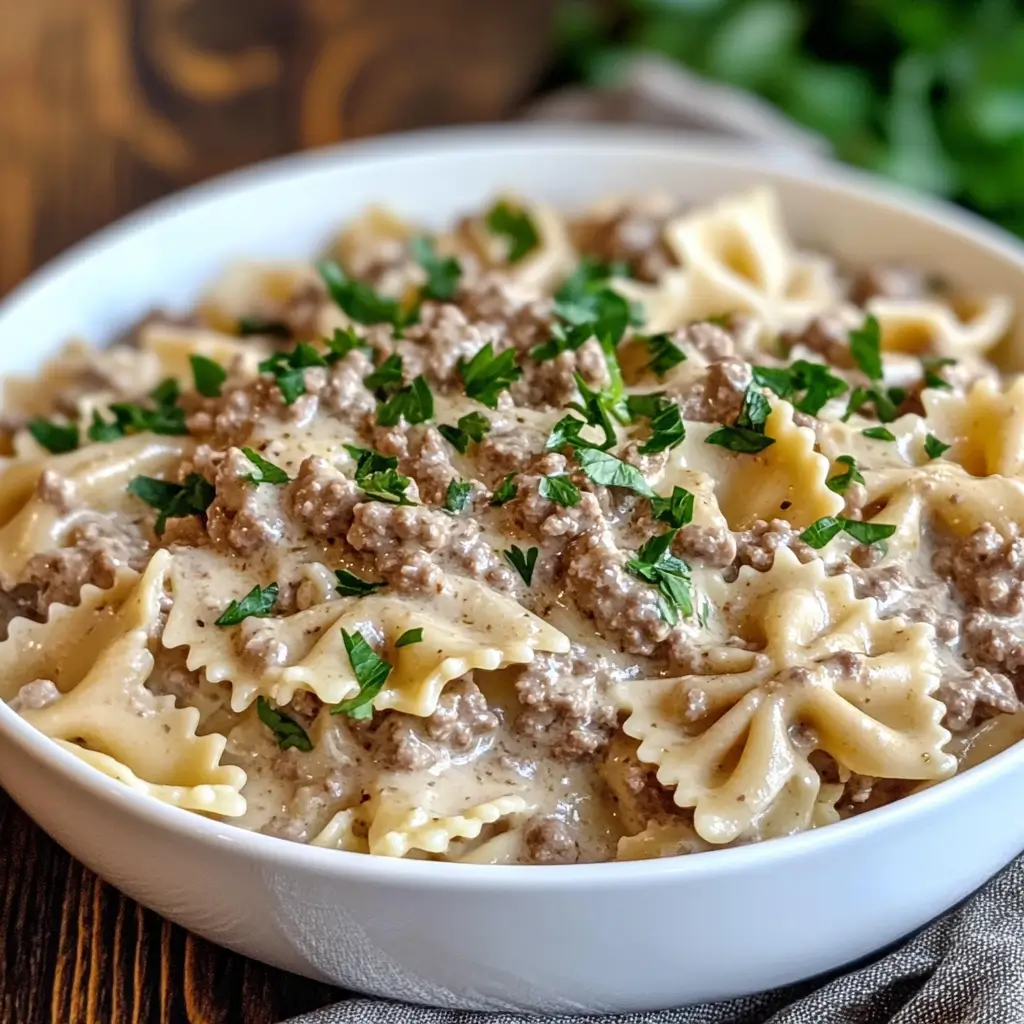Table of contents
Ricotta meatballs are a delightful variation of the classic meatball, celebrated for their light and fluffy texture. These meatballs, which originate from Italian culinary traditions, incorporate creamy ricotta cheese, creating a unique taste and mouthfeel that sets them apart from their denser counterparts.
Because of their versatility, they can be served as an appetizer, a main dish, or even a topping for pasta or salads. Additionally, the rich, savory flavor of ricotta meatballs pairs beautifully with various sauces, especially marinara or pesto. Unlike traditional meatballs that rely solely on ground meat, ricotta meatballs often strike a balance between hearty proteins and lighter, dairy-based ingredients.
What makes them so special is their adaptability. Whether you prefer a classic Italian twist or a modern fusion of flavors, ricotta meatballs are a dish that’s easy to customize. For these reasons, they remain a popular choice for home cooks and professional chefs alike. In this article, we’ll explore the core ingredients, preparation methods, and serving suggestions that make ricotta meatballs so beloved.
Main Ingredients of Ricotta Meatballs
Ricotta meatballs owe their unique texture and flavor to a harmonious combination of ingredients. While recipes may vary slightly based on regional or personal preferences, the core components remain consistent, ensuring the signature lightness and taste.
Ricotta Cheese: The Star Ingredient
Ricotta cheese is the defining element in these meatballs. Known for its mild, creamy flavor and velvety texture, ricotta transforms traditional meatballs into a softer, more luxurious dish.
- Role in the Recipe: Ricotta adds moisture and prevents the meatballs from becoming dense or dry.
- Quality Matters: Opt for high-quality ricotta, preferably fresh and without added stabilizers, to achieve the best results.
- Alternative Options: If ricotta isn’t available, mascarpone or cottage cheese (blended for smoothness) can work as substitutes.
Ground Meat: Types and Variations
Ground meat forms the protein base of ricotta meatballs.
- Common Choices: Traditional recipes often use ground beef, pork, or a mixture of the two for a balanced flavor.
- Other Options: Ground turkey or chicken are excellent alternatives for a leaner version. For vegetarians, plant-based meat or finely minced mushrooms can substitute.
Eggs: The Essential Binder
Eggs play a crucial role in holding the ingredients together.
- Why Eggs Are Used: They act as a natural binder, ensuring that the ricotta, breadcrumbs, and meat form a cohesive mixture.
- Egg Substitutes: For an egg-free recipe, chia seeds soaked in water or flaxseed meal can be used.
Breadcrumbs: For Texture and Binding
Breadcrumbs are another key component, providing structure to the meatballs.
- Types of Breadcrumbs: Plain breadcrumbs are often used, but panko breadcrumbs lend a lighter texture.
- Flavor Enhancements: For extra depth, use seasoned breadcrumbs or add grated Parmesan to the mix.
- Gluten-Free Options: Gluten-free breadcrumbs or almond meal work well for those avoiding gluten.
Herbs and Spices: Elevating the Flavor
A combination of fresh herbs and aromatic spices gives ricotta meatballs their signature taste.
- Popular Choices: Fresh parsley, basil, oregano, and garlic are commonly used.
- Spice It Up: For a touch of heat, consider adding red pepper flakes or black pepper. Nutmeg is another subtle addition that complements the ricotta beautifully.
- Customizing Flavors: Experiment with herbs like dill, cilantro, or thyme for a unique twist.
Optional Additions to Ricotta Meatballs
While the core ingredients make a fantastic base, adding optional ingredients can elevate the flavor, texture, and nutritional profile of ricotta meatballs.
Parmesan or Pecorino Cheese
Adding grated Parmesan or Pecorino cheese enhances the umami flavor and complements the ricotta’s creaminess.
- How Much to Add: A quarter to half a cup of finely grated cheese is typically sufficient for a batch of meatballs.
- Why It Works: The salty, nutty notes from these cheeses bring depth to the dish.
Vegetables for Added Nutrition
Incorporating finely chopped or grated vegetables can boost the nutritional value while adding subtle flavor.
- Popular Choices: Spinach, zucchini, carrots, or mushrooms.
- Preparation Tip: Sauté the vegetables lightly to remove excess moisture before mixing them into the meatball mixture.
Nuts or Seeds for Texture
Crushed nuts or seeds, such as pine nuts or sunflower seeds, can add a delightful crunch to the meatballs.
- Usage Idea: Toast the nuts or seeds for a richer flavor before incorporating them into the mixture.
Alternative Flours for Binding
If breadcrumbs aren’t an option, alternative flours can be used as binders.
- Common Choices: Almond flour, coconut flour, or even oat flour.
- Why Choose This: These options are great for gluten-free or low-carb diets.
Step-by-Step Preparation of Ricotta Meatballs

Creating ricotta meatballs at home is a straightforward process. The following steps guide you from preparation to cooking.
Mixing the Ingredients
- Combine the Core Ingredients: In a large mixing bowl, add ricotta cheese, ground meat, eggs, and breadcrumbs.
- Season Generously: Add herbs, spices, salt, and pepper. If using optional ingredients like Parmesan or vegetables, mix them in as well.
- Blend Thoroughly: Use clean hands or a spatula to combine the ingredients until they form a cohesive mixture. Avoid overmixing to prevent tough meatballs.
Shaping the Meatballs
- Portion Evenly: Use a tablespoon or small scoop to portion the mixture into equal sizes for uniform cooking.
- Shape Gently: Roll the portions into balls using your hands. The mixture should hold together without being overly sticky.
- Chill if Necessary: If the mixture feels too soft, refrigerate it for 20-30 minutes to make shaping easier.
Cooking Methods
Ricotta meatballs can be prepared using various cooking methods depending on personal preference.
- Baking:
- Preheat the oven to 375°F (190°C).
- Place the meatballs on a parchment-lined baking sheet.
- Bake for 20-25 minutes, or until golden and cooked through.
- Pan-Frying:
- Heat oil in a skillet over medium heat.
- Sear the meatballs on all sides until browned, then lower the heat and cook until done.
- Simmering:
- Place the shaped meatballs directly into a pot of simmering sauce (such as marinara).
- Cover and cook gently for 20-30 minutes, allowing the meatballs to absorb the sauce’s flavor.
The Secret to Perfect Ricotta Meatballs
While the recipe for ricotta meatballs is straightforward, achieving the perfect texture and flavor requires a few essential tips and tricks.
Balancing Moisture and Firmness
The soft texture of ricotta meatballs is their defining feature, but too much moisture can make them fall apart.
- Key Tip: Use high-quality ricotta cheese with minimal water content. If your ricotta feels too wet, drain it in a fine mesh strainer or cheesecloth for 30 minutes before using.
- Breadcrumb Adjustment: Add breadcrumbs gradually to control the consistency of the mixture without over-drying it.
Choosing the Right Ratio of Ingredients
A well-balanced ratio of ricotta to ground meat is critical.
- General Rule: Aim for a ratio of 1 cup of ricotta per pound of ground meat for the best combination of creaminess and structure.
- Customizing Ratios: For vegetarian versions, increase the ricotta slightly and add more breadcrumbs or alternative binders.
Importance of Seasoning and Taste Testing
Proper seasoning can make or break your ricotta meatballs.
- Season Generously: Salt, pepper, garlic, and herbs should be adjusted to taste. Remember, cheese also adds saltiness, so balance accordingly.
- Test a Small Portion: Before shaping all the meatballs, cook a small patty of the mixture in a skillet to test the seasoning. Adjust as needed.
Tips for Achieving the Ideal Texture
The ideal ricotta meatball should be light yet hold its shape.
- Gentle Mixing: Avoid overmixing, as this can lead to dense meatballs.
- Proper Shaping: Handle the mixture lightly when forming the meatballs. Using slightly wet hands can help prevent sticking.
- Cooking Time: Whether baking, frying, or simmering, cook the meatballs until just done to preserve their tenderness.
Serving Suggestions for Ricotta Meatballs

Ricotta meatballs are incredibly versatile and can be paired with a variety of sides, sauces, and presentations.
Traditional Pairings
- Tomato Sauce: Serve ricotta meatballs simmered in a rich marinara sauce for a classic Italian dish.
- Pasta: Pair the meatballs with spaghetti, penne, or tagliatelle for a comforting meal.
- Crusty Bread: Serve with fresh bread to soak up the flavorful sauce.
Creative Dishes
Ricotta meatballs can go beyond the traditional pairing with pasta.
- Soups: Add them to Italian wedding soup or a hearty vegetable broth for a unique twist.
- Sliders: Use small ricotta meatballs in slider buns with arugula and aioli for a crowd-pleasing appetizer.
- Salads: Top a green salad with warm ricotta meatballs and a light vinaigrette for a healthier option.
Wine and Beverage Pairings
Pairing the right drink enhances the meal experience.
- Red Wines: A Chianti or Sangiovese pairs beautifully with the robust flavors of ricotta meatballs in tomato sauce.
- White Wines: For a lighter approach, a crisp Pinot Grigio complements the creaminess of the ricotta.
- Non-Alcoholic Options: Sparkling water with lemon or iced tea can balance the richness of the dish.
Presentation Tips
Elevate your ricotta meatballs by focusing on presentation.
- Plating: Arrange the meatballs neatly on a platter with a drizzle of sauce and fresh basil leaves.
- Garnishes: Sprinkle grated Parmesan, chopped parsley, or crushed red pepper flakes for visual appeal.
- Family-Style Serving: Serve in a large dish, allowing guests to help themselves for a casual, communal dining experience.
Frequently Asked Questions
Ricotta meatballs may spark curiosity about their preparation, storage, and variations. Below are answers to some of the most common questions.
Can Ricotta Meatballs Be Made Without Meat?
Yes, ricotta meatballs can be made without meat, creating a delicious vegetarian option.
- How to Substitute: Replace ground meat with a combination of finely chopped vegetables, plant-based proteins, or breadcrumbs.
- Binding Ingredients: Increase the amount of ricotta and breadcrumbs to maintain the right consistency. Add an extra egg if needed for binding.
How Do You Store Leftovers?
Storing ricotta meatballs properly ensures their freshness for future meals.
- Refrigeration: Store cooked meatballs in an airtight container in the refrigerator for up to 3 days.
- Reheating Tip: Reheat gently in a skillet with a bit of sauce to keep them moist.
Can Ricotta Meatballs Be Frozen?
Yes, ricotta meatballs are freezer-friendly and can be stored for later use.
- Freezing Raw Meatballs: Arrange shaped raw meatballs on a baking sheet, freeze until firm, then transfer to a freezer-safe bag or container.
- Freezing Cooked Meatballs: Allow them to cool completely, then freeze with or without sauce in an airtight container.
- Shelf Life: Frozen meatballs last up to 3 months. Thaw overnight in the refrigerator before reheating or cooking.
What’s the Best Sauce for Ricotta Meatballs?
The choice of sauce depends on your personal preference and the dish’s context.
- Classic Marinara: A tangy tomato-based sauce is the traditional pairing.
- Cream Sauces: Alfredo or a garlic butter sauce works well for a richer dish.
- Pesto: Basil or arugula pesto adds a fresh, herbaceous flavor.
- Broth: For lighter fare, serve the meatballs in a clear vegetable or chicken broth.
Are Ricotta Meatballs Suitable for Gluten-Free Diets?
Ricotta meatballs can easily be adapted for gluten-free diets.
- Substituting Breadcrumbs: Use gluten-free breadcrumbs, almond meal, or crushed rice crackers as a binding agent.
- Cross-Check Other Ingredients: Ensure that all other ingredients, like cheese or sauces, are certified gluten-free.
How Can You Add a Flavor Twist?
Experimenting with spices and ingredients can create exciting variations.
- Spicy Meatballs: Add crushed red pepper flakes or cayenne for heat.
- Herbaceous Flavor: Incorporate fresh dill, cilantro, or thyme into the mixture.
- International Twist: Use curry spices or soy sauce for an entirely new flavor profile.
Conclusion
Ricotta meatballs are a versatile and delectable dish that seamlessly combines the creamy goodness of ricotta cheese with the savory appeal of traditional meatballs. Not only are they delicious, but they also cater to a wide variety of preferences and occasions. Whether you choose to stick to a classic Italian preparation or decide to explore creative variations, ricotta_meatballs are sure to delight any palate.
Moreover, their adaptability to different ingredients, cooking methods, and serving styles makes them an excellent choice for casual family dinners or even more impressive gatherings. For instance, you can serve them with marinara sauce over pasta for a traditional experience or pair them with lighter sides for a modern twist. In addition, by understanding the balance of moisture and firmness, perfecting seasoning, and exploring pairing options, you can create ricotta_meatballs that are uniquely your own.
Therefore, give this recipe a try, and discover why ricotta meatballs have earned their place as a beloved dish in kitchens around the globe. With just a little preparation and creativity, this classic comfort food can quickly become a household favorite.





